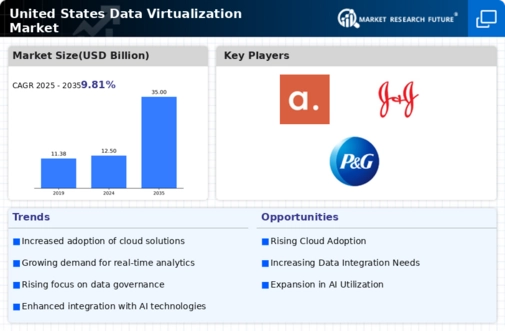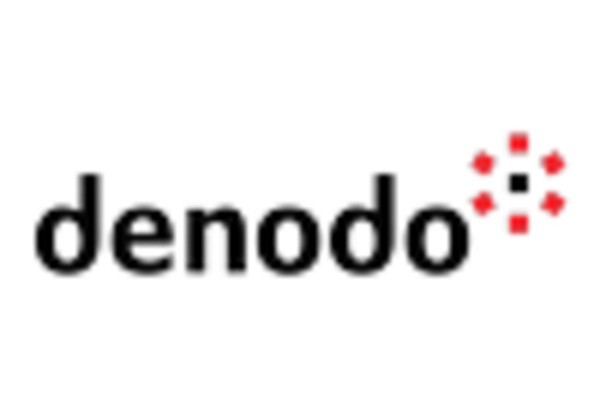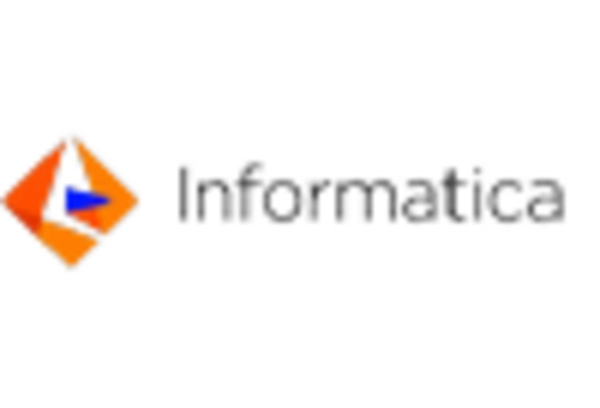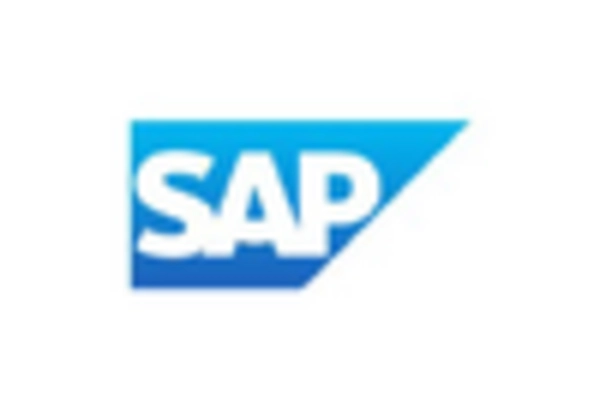Rising Complexity of Data Environments
The increasing complexity of data environments is a significant driver for the data virtualization market. Organizations are grappling with vast amounts of data generated from various sources, including IoT devices, social media, and enterprise applications. This complexity necessitates advanced data management solutions that can integrate disparate data sources without the need for extensive data replication. The data virtualization market is positioned to address these challenges by providing a unified view of data across the organization. As businesses strive to streamline their data operations, the demand for virtualization solutions is expected to rise. This trend indicates a shift towards more agile data management practices, which could enhance the overall efficiency of data utilization in organizations.
Increased Regulatory Compliance Requirements
The The data virtualization market is driven by heightened regulatory compliance requirements.. Organizations are facing stringent regulations regarding data privacy and security, such as the CCPA and GDPR. These regulations compel businesses to adopt robust data management practices that ensure compliance while maintaining operational efficiency. Data virtualization solutions offer a way to manage data access and security effectively, allowing organizations to comply with regulations without compromising on performance. As compliance becomes a critical concern, the The data virtualization market will likely see increased adoption as companies seek to mitigate risks associated with data handling and ensure adherence to legal standards..
Advancements in Data Integration Technologies
Technological advancements in data integration are playing a pivotal role in the growth of the data virtualization market. Innovations in APIs, cloud computing, and data orchestration tools are enabling organizations to connect and integrate data from various sources more efficiently. These advancements facilitate the creation of a cohesive data ecosystem, allowing businesses to leverage their data assets effectively. As organizations continue to invest in modern data integration technologies, the data virtualization market is expected to benefit significantly. The ability to access and analyze data in real-time is becoming increasingly important, and data virtualization solutions are well-positioned to meet these evolving needs.
Growing Demand for Data-Driven Decision Making
The data virtualization market is experiencing a surge in demand as organizations increasingly rely on data-driven decision making. This trend is fueled by the need for real-time insights and analytics, which enable businesses to respond swiftly to market changes. According to recent estimates, the The data virtualization market is projected to grow at a CAGR of approximately 20% over the next five years.. Companies are recognizing that effective data management can lead to improved operational efficiency and competitive advantage. As a result, investments in data virtualization technologies are becoming a priority for many organizations. This growing emphasis on data-driven strategies is likely to propel the data virtualization market forward, as businesses seek solutions that facilitate seamless access to diverse data sources.
Shift Towards Hybrid and Multi-Cloud Strategies
The shift towards hybrid and multi-cloud strategies is emerging as a key driver for the data virtualization market. Organizations are increasingly adopting hybrid cloud environments to optimize their data storage and processing capabilities. This trend allows businesses to leverage the benefits of both on-premises and cloud solutions, enhancing flexibility and scalability. Data virtualization plays a crucial role in this context by providing a seamless way to access and manage data across different environments. As companies seek to maximize their cloud investments while maintaining control over their data, the demand for data virtualization solutions is likely to grow. This shift indicates a broader trend towards more integrated and flexible data management approaches.

















Leave a Comment